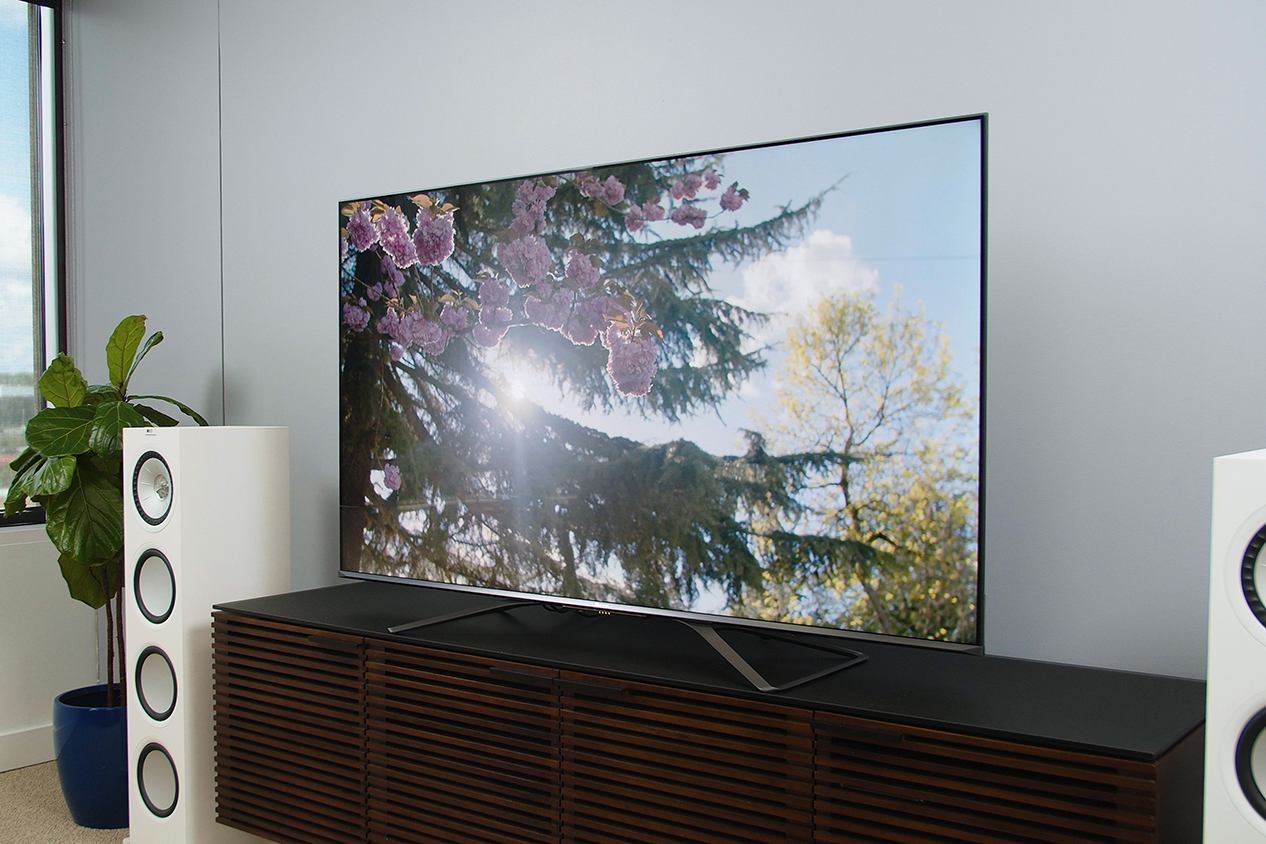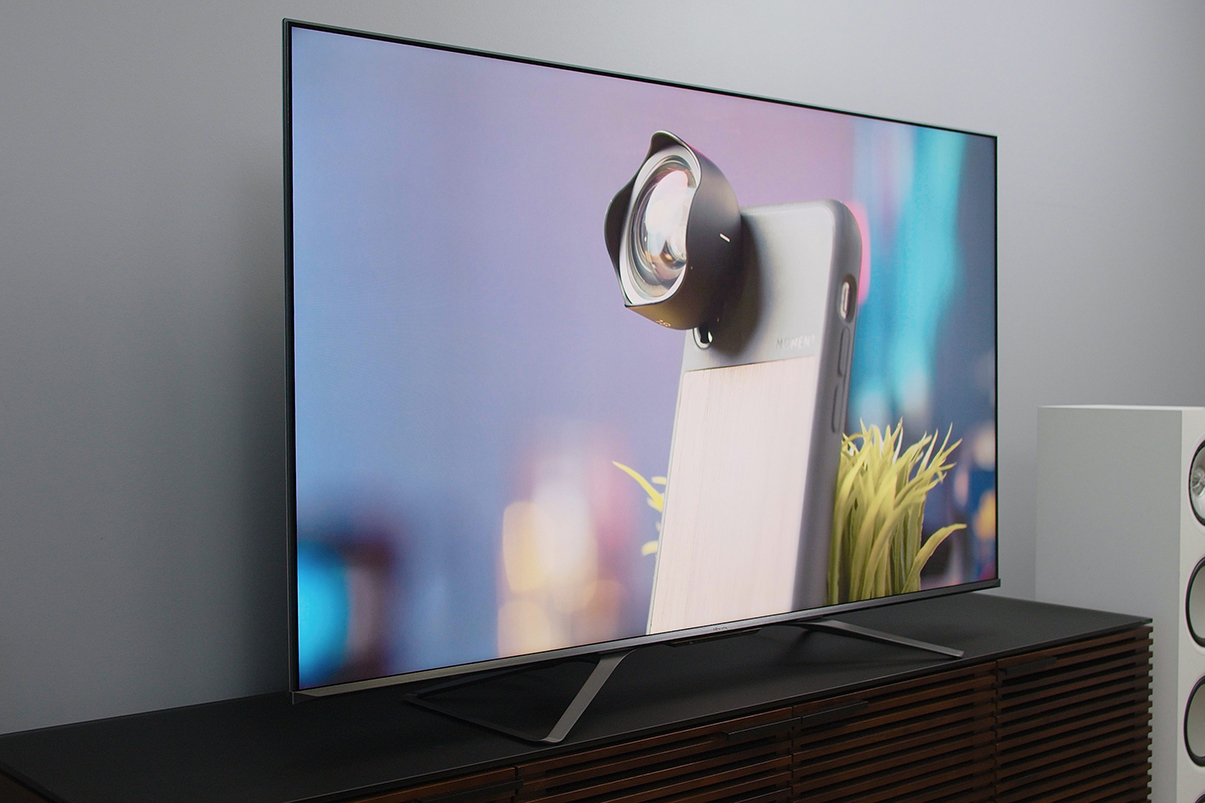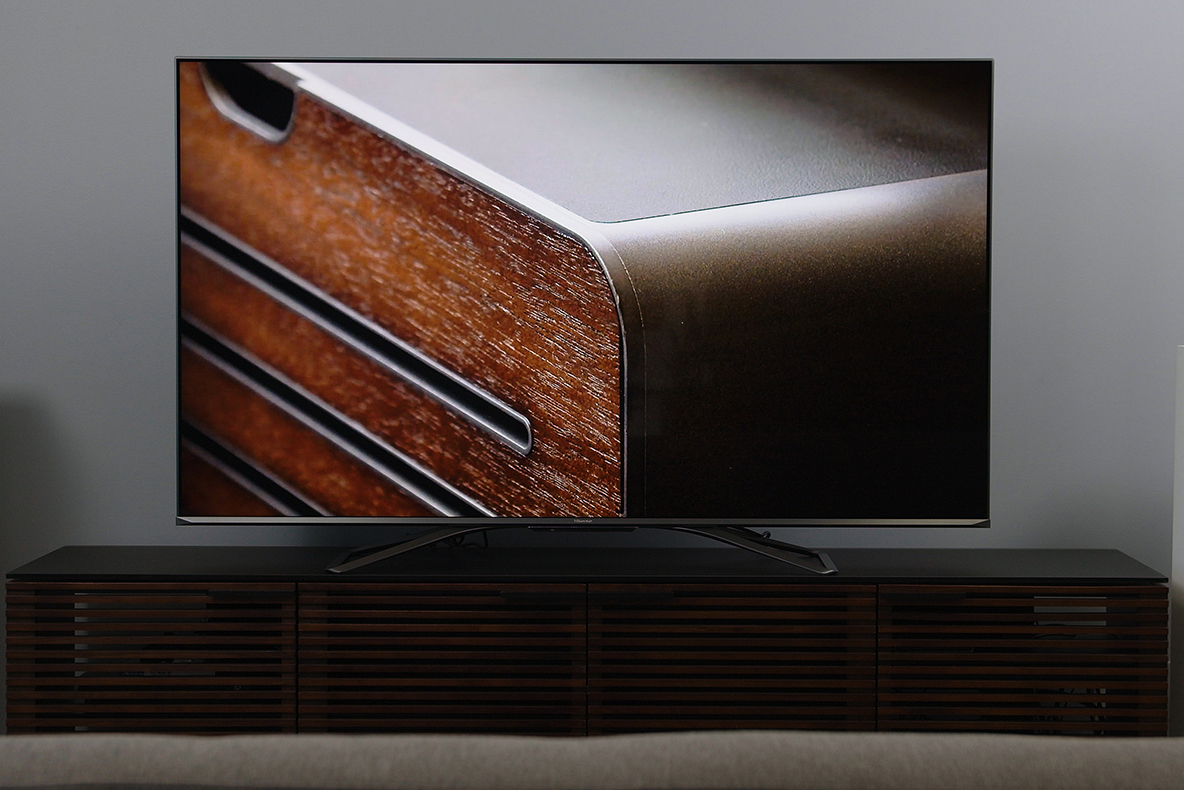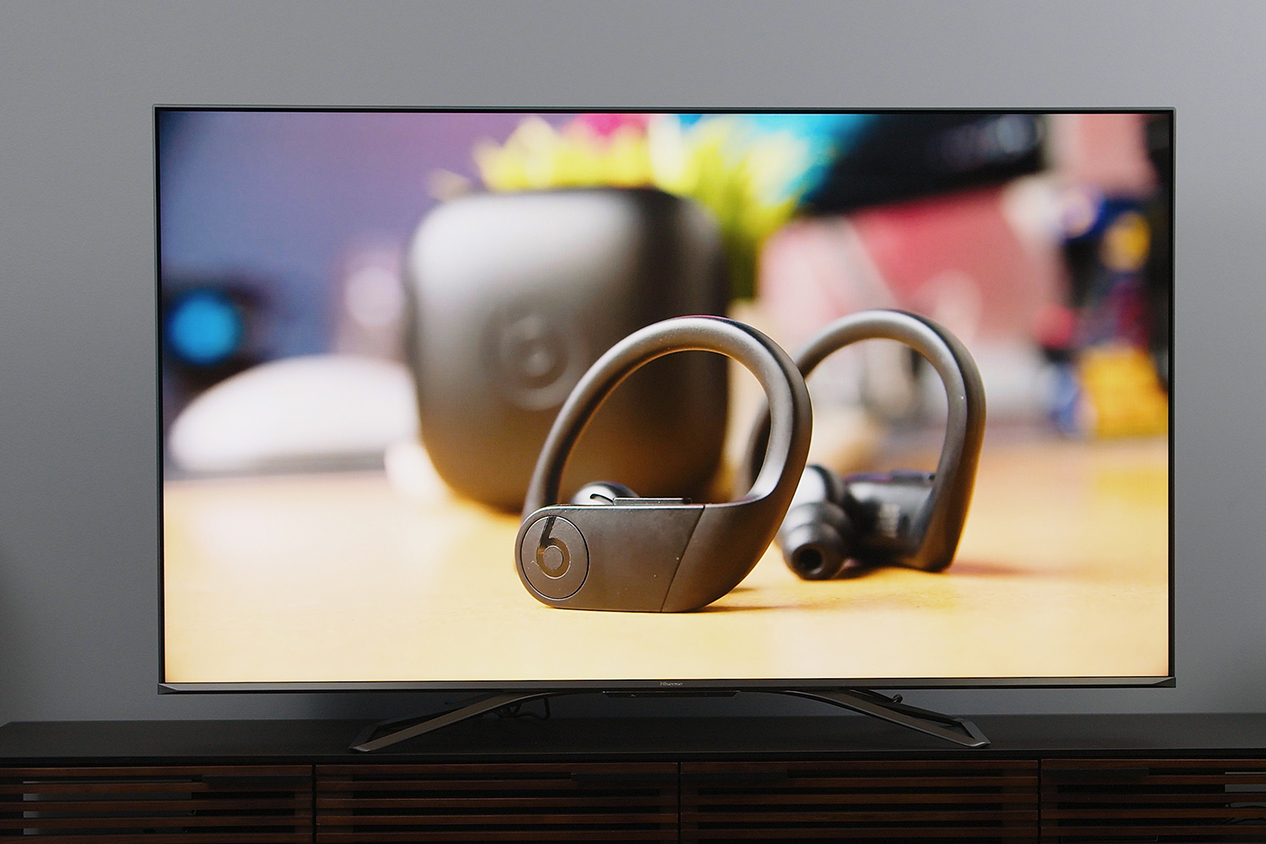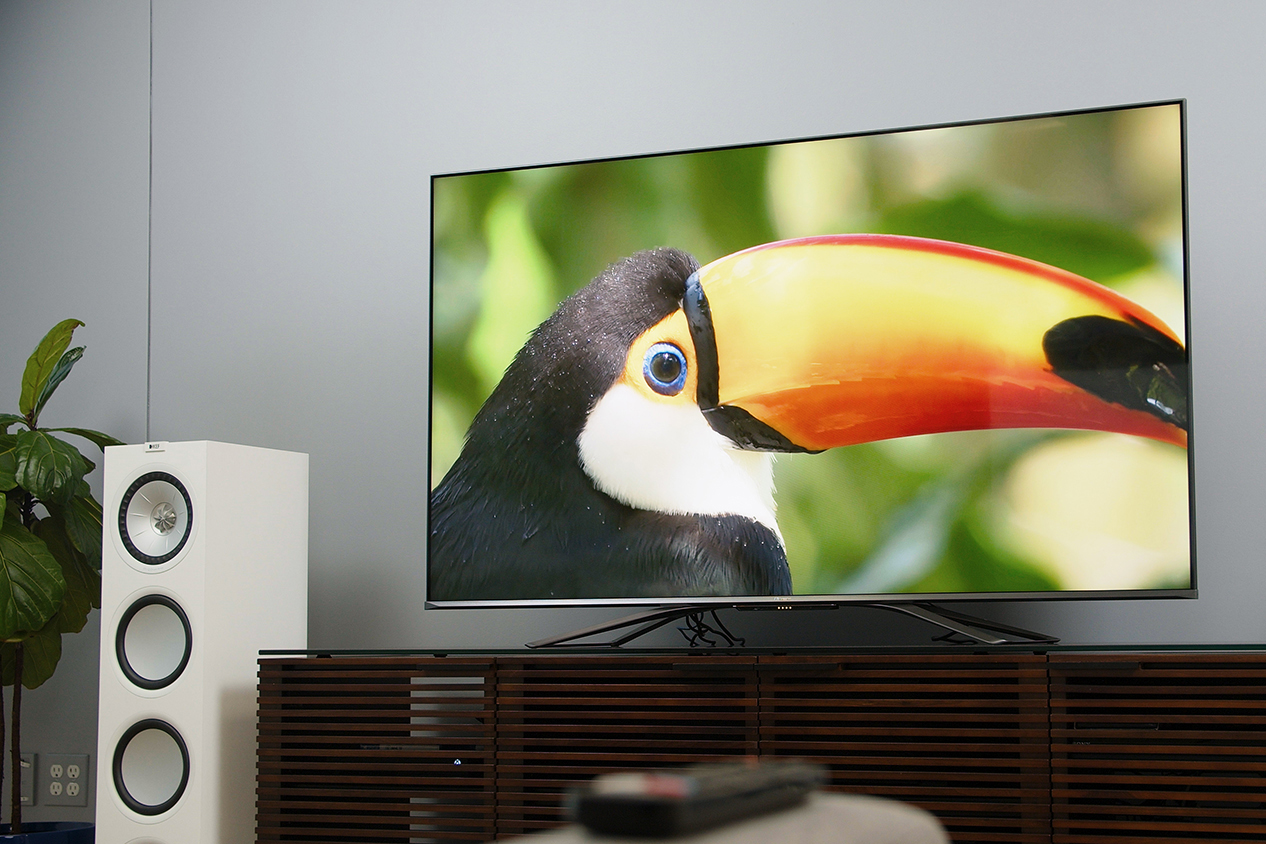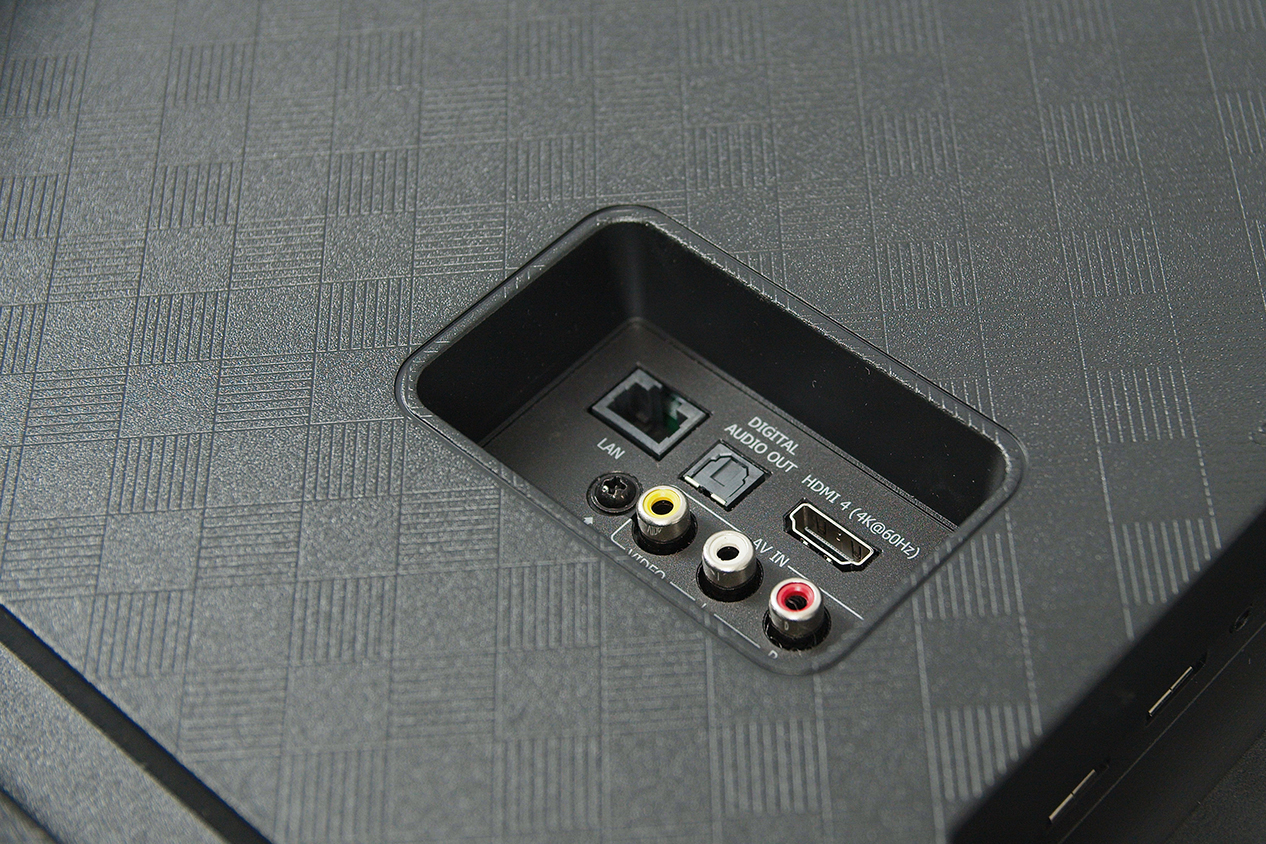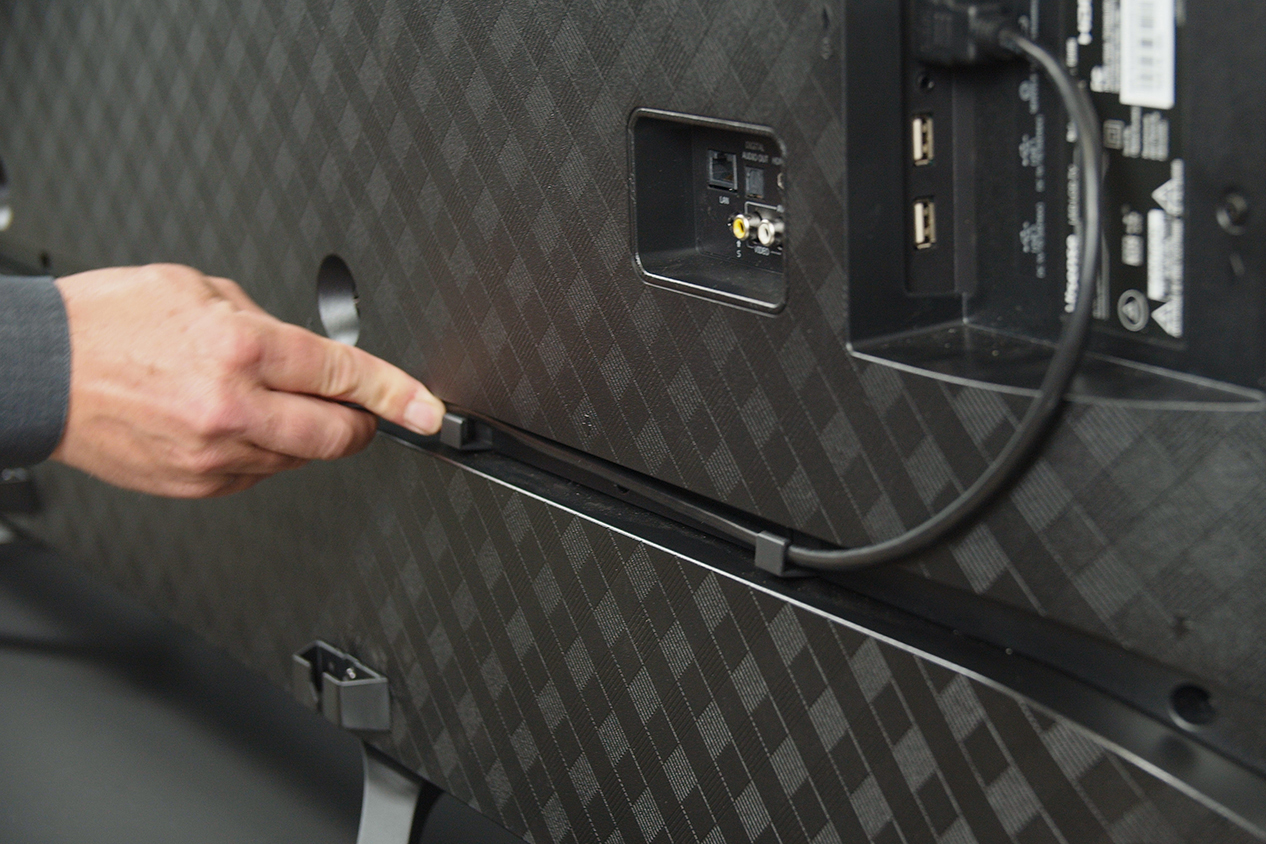“The H9G Quantum's picture quality rivals TVs that cost twice as much.”
- Incredibly bright
- Very good black levels
- Surprisingly good HDR picture
- Easy to use
- Responsive Android TV OS
- Color is a little off
- Motion stutters at times
Hisense is on a tear.
After several years of chasing after the same sort of brand recognition that competing manufacturers like LG, Samsung, and Sony enjoy, Hisense’s sales have begun to soar. And if its H9G Quantum TV is any indication, the company may well find itself in a dominant position.
The H9G Quantum is the first time I can recall a TV that has so profoundly underpromised and overdelivered. It’s not perfect, but it is going to be one of the
Out of the box
Even though I recently reviewed the Hisense H8G, I was pleasantly surprised at how sleek the H9G looked once I set it up. I do have to say I was taken aback by the TV’s feet at first — they look like giant
When in place, those giant feet don’t look so cumbersome and large any longer. Half of them are hidden from view and the half you do see seem to dress the TV up well. Not that the H9G needs much dressing up. It has almost nonexistent bezels on the top and the sides that are recessed slightly behind the TV’s glass panel, making for a very modern and minimalist look. The brushed metal trim at the bottom seems out of place by comparison but thankfully doesn’t call too much attention to itself.

In the box with the TV were the aforementioned feet, four screws, a power cable, remote, batteries, and a mess of paper product literature.
As for the remote: It’s pretty basic, but it does have some hot keys for popular

Features
Connectivity is all the rage these days, and this is where the H9G quantum falls a little short. While competing TV makers are touting several gaming-friendly features like auto low-latency mode (auto game mode), variable refresh rate (VRR), 4K 120Hz picture performance, and eARC, none of the four HDMI ports on the H9G support any of those features.
For gamers, low input lag and HDR picture quality are present, and for those connecting soundbars, standard ARC will have to do because there’s no support for Dolby Atmos passthrough.
Those shortfalls might be easy to overlook for those who don’t plan on doing any gaming with their TVs and just want an outstanding picture. The H9G does offer a full-array local dimming LED backlight system with 132 zones in the 55-inch model ($700) and 180 zones in the 65-inch model ($950) reviewed here.

Hisense also claims a peak brightness of 1000 nits, which is not only sufficiently bright for convincing
I’ll go back to calling this TV the H9G Quantum just long enough to mention that the Quantum in the name means quantum dots in the TV itself, and that should provide for not only very wide color gamut but also a higher color volume, with more degrees of intensity for those colors.
All of this to say: If picture quality at a nice price is what you’re after, you will definitely want to keep reading.
User experience
Before I get to picture quality, I want to talk about what it’s like to use the H9G. On the whole, it is a pleasant experience, but I did run into a few quirks that might bother those who like to tweak their picture settings for the best performance possible.

The Hisense H9G runs on the Android TV platform and does so sufficiently — the experience is fast enough, with a modicum of lag when clicking through apps, and apps themselves load fairly quickly. Chromecast is built right in, so you can find your favorite videos, photos, or music with your phone and launch them on your TV using a mobile device or computer.
When it comes to picture settings, there’s some very good news and some slightly perplexing news. The good news is that when you select a picture mode for SDR (standard dynamic range — like cable/satellite TV, DVDs, most games), the system automatically picks the picture mode that makes the most sense for
Just sit, click, watch, and know you are getting the best picture performance.
For example, when I selected Theater Day mode for standard viewing, the TV automatically went into

That kind of automation isn’t something I’ve seen before, and it is extremely helpful to the average user who isn’t interested in making a bunch of manual adjustments. Just sit, click, watch, and know you are getting the best picture performance.
Hisense has also folded in some automatic, A.I.-powered picture and sound adjustment features that attempt to optimize the TV’s picture and sound based on environmental factors, but I did not find them to be particularly useful. Generally, I prefer to be in control.
And it is the control freak in me that was perplexed at why I could not have independent white balance settings for SDR and
Picture performance
I hinted at this earlier, but now allow me to be very clear: The Hisense H9G has outstanding picture quality for the price. In fact, I suspect this could be the right TV choice for a very wide audience.
Right on the box, Hisense claims this TV is capable of 1,000 nits of brightness. That seems an odd thing to do since the vast majority of folks who would see this TV in its box while shopping probably aren’t hip to what a nit is, let alone how many of them you would want your TV to be capable of producing. But I suppose it is a big number, and folks might assume it is good.

As it happens, that is a pretty good number. I feel you need at least 750 nits of peak brightness to make
The H9G simply dazzles.
All that brightness doesn’t mean much, however, if the TV can’t also display dark blacks effectively. To my amazement, the H9G offers some of the most impressive black levels I’ve ever seen on an LED TV, let alone one that costs under $1,000.
The result of the H9G’s impressive brightness and deep black levels results in truly exciting contrast. You don’t have to be a TV connoisseur to appreciate it — the H9G simply dazzles.
Since I approach every TV with the same level of scrutiny, I did test the H9G’s color accuracy. It wasn’t poor, but it wasn’t as good as I’d hoped. Making matters worse, I had a hard time adjusting it due to an aforementioned color tuning issue.
Using Calman software along with a SpectraCal C6 colorimeter, I found that the white measurement had far too much blue in it. Whenever you have one color out of balance in white, it will throw off all other colors. This manifested itself in a magenta hue to white and off-white colors, and I also felt that reds were significantly impacted.
But I’m a TV nerd and I do this every day. I don’t think most folks will have a problem with the H9G’s level of color accuracy.

I do, however, think that some folks might have an issue with the H9G’s handling of motion. Whenever I test a TV, I turn motion smoothing features off because I don’t care for the so-called soap opera effect they cause, and I have to level the playing field for all the TVs I test.
With the motion smoothing turned off, I saw a fair amount of stuttered motion, and not just in fast-moving sports. Even faces on the screen would appear to blink when they would move slightly. The issue was more apparent in some scenes than others, but once I saw it, I couldn’t unsee it, which I found a little frustrating.

Other users have reported similar problems to me, while others still have said they’ve not experienced the problem. This is likely because some folks are simply more sensitive to little anomalies than others.
On the whole, however, the H9G is a satisfying TV to watch, and I think most folks will absolutely love it. Both SDR and
Our take
The Hisense H9G Quantum is one of the best values in TV we will see in 2020 and well into 2021. Its picture quality will stun most viewers, while its ease of use will make it a joy to experience any time it is turned on.
Is there a better alternative?
Possibly. The TCL R635 looks very promising, as does the Vizio P-Series Quantum. The TCL R635, at $900, may end up being a slightly better alternative in some respects, and for less money. I’m also confident Vizio’s $1,000 P-Series Quantum will be very competitive in the brightness department for those who may need an even brighter TV, though that is difficult to imagine after looking at the H9G. I’ll update this section once those TVs have been thoroughly evaluated.
How long will it last?
The Hisense H9G is not well-suited to take advantage of advanced gaming features that will be offered with next-gen
Warranty
Hisense offers a 1-year parts and labor warranty.
Should you buy it
Yes. If you don’t need advanced gaming features but want a very bright TV with impressive black levels and overall terrific picture quality, all without breaking the bank, the Hisense H9G Quantum is an outstanding choice.
Editors' Recommendations
- Best Sony TV deals: Save on best-in-class 4K TVs and 8K TVs
- Sony debuts the Bravia 9, its brightest 4K TV ever, alongside new 2024 models
- Let’s discuss an Apple TV 4K with a camera
- Best TCL TV deals: 4K TVs as low as $150
- Best 65-inch TV deals: Get a 65-inch 4K TV for under $400

